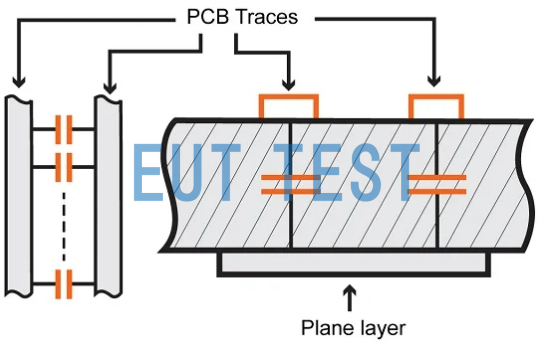Introduction:
When we design prototypes or use development boards, EMI electromagnetic interference is usually negligible. However, in real-life electronic devices and systems, EMI is an important topic, and it is the responsibility of the hardware development engineer to find the causes of EMI EMI and eliminate EMI interference using different solutions to ensure that circuits work properly at expected EMI levels and do not generate excessive EMI.Below is a look at two of the most representative types of EMC-EMI testing, respectively of conducted interference and radiated interference.
Radiation Interference EMI Source:
The PCB of a subject device in normal operating condition is full of time-varying signals that propagate out into space in the form of electromagnetic radiation, whether you want it to or not. I'd also like to point out that every conductor on the PCB is an antenna that both transmits and receives signals, and this includes metal conductors such as excess pins of plug-in components, exposed pins of connectors, and so on.
Wireless transmission and reception is a good thing when you are trying to implement RF communications. In most other cases, you are generating or receiving radiated interference signals. When we talk about the effects of this noise on individual circuits or devices, it becomes "radiated interference EMI".
Circuits generate and receive radiated interference, and the environment in which the device operates determines which of these realities presents the greater challenge to the engineer. If you are designing a high-precision sensor board that must be in close proximity to a brushed DC motor or a wireless power transmitter, then dealing with the received EMI will be a priority. If you are developing embedded devices that must meet US FCC emissions requirements, you may need to focus on generating less EMI.
Conducted Interference EMI Source
We are all so used to transmitting electrical signals through conductors such as wires and PCB alignments that it is not surprising that there is also such a thing as "conducted interference EMI".
You may be wondering about the difference between conducted EMI and simple circuit noise. I would say they are essentially the same; we use different terms because conducted EMI is a special form of noise.
When we talk about conducted EMI, we are referring to noise generated by a device or subcircuit and transmitted to another device or subcircuit via wiring, PCB alignment, power/ground layers, or parasitic capacitance. The last item on this list is an important one to remember: Unconscious capacitors are everywhere, and they easily provide a path by which high-frequency signals can be coupled from one conductor to another. I did not include capacitive coupling in the "radiated EMI" category because it operates over very short distances and is based on electric fields rather than electromagnetic radiation.
As shown in the figure below, if there is a conductive interference signal on two adjacent wires in the PCB, it will also be capacitively coupled to nearby alignments, and in addition, the top and bottom or middle layers of the PCB will be coupled to each other for EMI interference signals.

PCB alignment conducts interference signals on different alignments through capacitive coupling
The main source of conducted interference:
Conducted Interference TestGenerally tested only at low frequencies, switching power supplies (also known as switched mode power supplies, DC/DC converters) are a widespread source of conducted EMI. The switching action of the converter generates high amplitude transient currents that become conducted EMI when they negatively affect the load circuitry or the power supply powering the DC/DC converter.
The biggest difference between conducted and radiated EMI:
In summary, you have understood the basic concepts of radiated interference and conducted interference and the reasons for it, it is not difficult to conclude that the biggest difference between the two types of EMI interference is that conducted interference is propagated through the line, while radiated interference is airborne.

